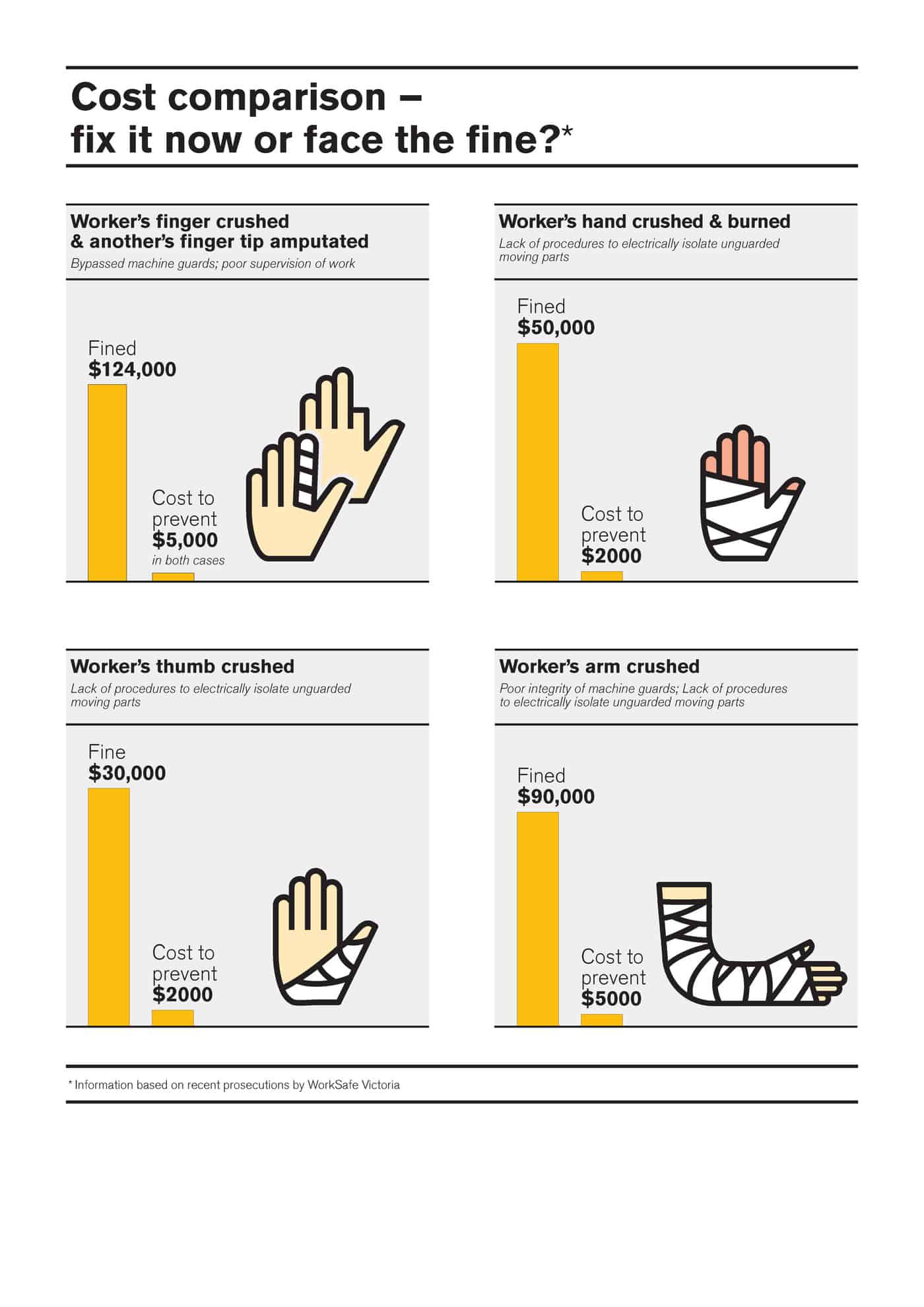The increasing prevalence of pictorial social media has generated a surge in organisations generating “infographics” from workplace health and safety statistics Almost always these images are a technique for generating internet traffic through established websites, blogs and other online services. Fundamentally it is stealth advertising for the unwary online user. However, such images have much greater legitimacy when offered by OHS regulators.
 In the week prior to its WorkSafe Week 2012, WorkSafe Victoria issued two online infographics as part of a media statement. Both are attractive by their simplicity but the simplicity can also be a problem.
In the week prior to its WorkSafe Week 2012, WorkSafe Victoria issued two online infographics as part of a media statement. Both are attractive by their simplicity but the simplicity can also be a problem.
The cost comparison infographic is super general but clearly illustrates that the cost to prevent harm is much less than any fine that may come from prosecution. However, the risk of being prosecuted in Victoria and receiving a monetary penalty seems to be declining as non-pecuniary penalties, such as enforceable undertakings and others, are made available to the Courts.
Fines are only one of the potential costs. An inescapable cost is the cost to the injured worker, the disruption to that worker’s family life, the disruption to the worker’s employer. Continue reading “WorkSafe tries a new promotional approach”




